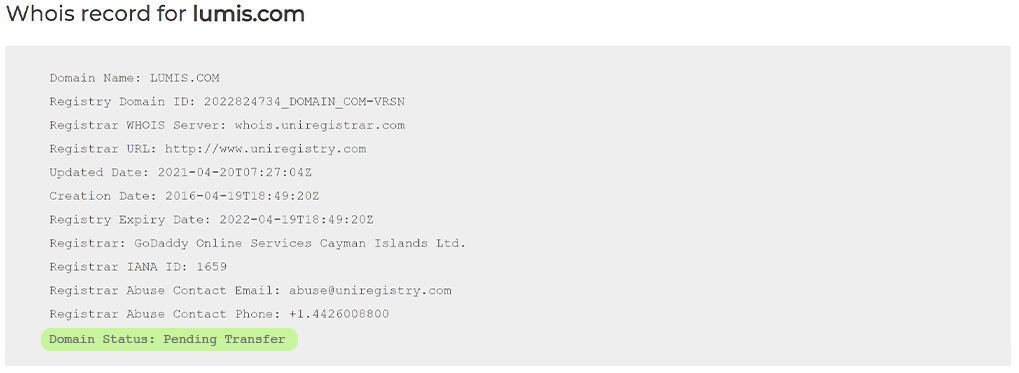Same Registrar Domain Transfer (Internal) (Push Domain Transfer)
If you’d like to maintain the registrar that the domain is located, you will need to perform an internal (push) domain name transfer.
An example of this would be to transfer a domain name from a GoDaddy account to another GoDaddy account.
Prior to pushing the domain, the gaining account will need to have the account setup completed. This will often need to involve completing all the details of their WHOIS contacts so that upon pushing the domain it will enable the domain to populate with the gaining account’s contact information. Failure to do this will often result in a transfer error.
The domain transfer process can differ at each registrar but it will typically involve the losing registrant to obtain the account information (Most commonly username and/or email address) of the gaining account and to “push” the domain name to the new account. The gaining account will often need to then confirm acceptance of the domain name within their account to complete the transfer. This is commonly accompanied by an email confirmation from the domain registrar to each party.
Other methods can instead require the gaining account to first request the domain be transferred to their account and the losing account registrant to then confirm the transfer out (see Network Solutions).
Again, each domain registrar is a bit different. Upon pushing the domain name from one account to another and then accepting the transfer via the gaining account can take several days until the transfer is confirmed by the registrar and finalized.
Transfer To a Different Registrar (External)
This method to transfer a domain name can be a bit tricky. As you will often find yourself communicating across different time zones with different companies with varying degrees of support.
To begin, the domain will need to be eligible for transfer. Updating WHOIS contact information can lock a domain name from transferring to a different registrar for 60 days. The losing domain registrant will have likely been made aware of this by their domain registrar should they have updated their information.
Also, if the domain name has been transferred from one registrar to another within the past 60 days, this will also block it from transfer until 60 days have passed.
Before transferring a domain name, the losing registrant will need to complete a few steps. See our explanation on the specific process for each domain registrar.
1. Make sure the domain name is unlocked.
This can be done from within their domain name account. At most registrars, this is as simple as clicking the “unlock” button, most commonly denoted by an image of a lock, and clicking save.
2. Remove any email privacy.
While this step is a bit antiquated given the most common practice for transferring domain names it’s still important to perform. Transfer emails and otherwise sent by domain registrars will most commonly be sent to the Administrative Contact on the WHOIS record.
3. Obtain the Authorization code (also known as an EPP Code)
It’s important to not share this code with anyone outside of the relevant parties involved with the domain name transfer. This code will allow the holder to transfer the domain.
The Gaining Registrant will then need to complete the following steps.
1. Obtain the Authorization code (also known as an EPP Code)
Provided the losing registrant has completed all the necessary steps and the domain is eligible for transfer the transfer should begin once the authorization code is input.

See our explanation on the specific process for each domain registrar